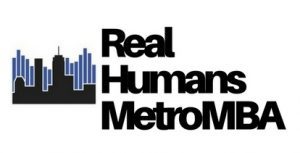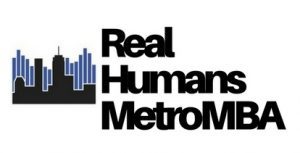Real Humans of the Rady School of Management MBA Program

In less than 20 years since opening in 2001, the University of California San Diego Rady School of Management has quickly cemented itself as one of the best up-and-coming business schools in California. Regarded as one of the 100 best business schools in the world by The Economist, with an impeccably strong and celebrated faculty, Rady has nurtured an increasingly excelling MBA class.

The Rady School of Business Class of 2019 MBA sported a gaudy median GMAT score of 670 and an undergraduate GPA of 3.21. These students also joined the program having amassed more than five years of professional work experience, on average, with numerous prospective graduates coming from well-known companies like: Intel Corporation, Loreal, Princeton University, and Scripps Health. As well, about 16 percent of students within the class joined the program having already earned either their Ph.D. or an additional Master’s degree.
Considering San Diego’s strong connection to the United States Armed Forces, it isn’t surprising to hear that many students in the Class of 2019 come directly from the U.S. Army, Navy, and Army. The Rady School of Management, along with many of UC San Diego’s additional graduate schools, show a concerted effort to bring in those with military experience, offering MBA fee waivers, as well help from an extensive network of school alumni that continue to work with the U.S. military.
But the Class of 2019, and the Rady School of Management itself, goes much deeper. With a budding entrepreneurial culture, students are coming in from all over the world to help build groundbreaking startup companies. In fact, more than 40 percent of the MBA Class of 2019 comes from outside the United States, utilizing Rady’s numerous startup resources, like the StartR Accelerator program, mystartupXX Accelerator, and the Rady Venture Club, among others.
To get a greater understanding of what it means to be a Rady MBA, and how the school continues to help develop a rich entrepreneurial foundation, we spoke with several current students, including a consultant from Bangalore, a software developer from Kolkata, and a local equine veterinarian hoping to build a “biotech and medical industry consulting firm in for both the human and veterinary market.”
Read on to see what’s in store for these students at Rady and what life after an MBA may look like.
Real Humans of the NYU Stern MBA Class of 2019


Clear Admit recently profiled many of the standout students from the NYU Stern MBA Class of 2019, which you can read below.
New York University’s Stern School of Business got the party started this summer as the first leading business school to share a profile for its incoming Class of 2019. That profile, published in late July, revealed a 4 percent uptick in application volume over the prior year. At the same time, the school admitted significantly fewer students—822 this year as compared to 871 last year—which means that those who got in did so against greater odds.



This increased selectivity may have contributed to the rising GMAT scores among those who got the nod. Both average and median GMAT scores increased year over year. The average GMAT score jumped six points, from 710 to 714. The median score increased even more significantly, from 710 to 720. Average GPA, though, slipped slightly, from 3.51 to 3.48.
As the school’s admissions process grew more selective, the enrolled class grew more diverse. The incoming class is 38 percent female, up from 35 percent the prior year. International students also increased to represent 37 percent of the Class of 2019, up from 35 percent in the Class of 2018.
In terms of the work experience they bring with them, more members of the Class of 2019 come from the financial services industry (29 percent) than any other. Another 12 percent of the class came from consulting. Students with government/non-profit, tech, and military backgrounds followed, at 7 percent each.
While some of these statistics hint at both the diversity and the high caliber of the incoming class, nothing brings that to life more than a look at some of the real students who enrolled. We spoke with five of them—drawn from Massachusetts, Texas, Michigan, India, and Lebanon respectively—to learn more about why they chose Stern, how they hope the Stern MBA will help them transform their careers, what advice they would offer to applicants navigating the admissions process right now, and more.
Perhaps not surprising, NYU Stern’s New York City location factored highly into the decision-making process for many of the students we asked. But so too did its community—including how approachable and friendly current students were to prospective students and the school-wide emphasis on IQ + EQ (emotional quotient)—and its curriculum, which has a strong core but also gives students the opportunity to explore electives early on and offers specializations in things like luxury marketing and technology. The reach of its alumni base was also a factor cited by several of the students we spoke with.
Read on to learn more about some standout members of the NYU Stern MBA Class of 2019.
Real Humans of the Syracuse Whitman Class of 2019


On the eve of its 100th anniversary, the student body of the Whitman School of Management at Syracuse University has become more diverse than ever before. Not only do most of the students from the Whitman Class of 2019 come from outside the United States, but the majority also earned undergraduate degrees from various non-traditional backgrounds, expanding what it means to be a Syracuse MBA.


Among the Class of 2019, just under half (46 percent) of students in the program identified as female; well over the national average, according to GMAC data. Along with the 61 percent of students arriving from outside the United States, the Class of 2019 shares the unique distinction of being one of the youngest in the country, with an average age of just 25. In an academic field usually dominated by older professionals with rich, traditional backgrounds, Whitman has managed to disrupt many of the perceptions that come with an MBA.
The average GMAT score has been steadily rising over the past several years as well, jumping from 623 last year to 643 for the Class of 2019. But alongside rising test score averages, the prior work experience of the class has fallen, dropping from an average of 38 months to 28 months in just one year.
The expansive talent pool at Whitman, however, isn’t solely limited to the traditional full-time program. The ever-advancing online MBA, known simply as MBA@Syracuse, allows students to study many of the more traditional MBA specialties, including: accounting, business analytics, entrepreneurship, and finance, as well as supply chain management and marketing management. Not only that, Whitman states emphatically that there is no distinct difference in the curriculum of the online MBA and the full-time program. Rather, the only key difference is flexibility. Students in the online program can take classes from anywhere, with residencies offered in multiple cities outside of Syracuse.
To get a greater understanding of what it means to be a Syracuse MBA student, we spoke with several current students, including an Azerbaijan-born startup founder, an Indian-born analytical software expert, and an American dual JD/MBA prospect who is making a huge transition away from a career in Antarctica. Read on to see what’s in store for these students at Whitman and what life after an MBA may look like.
